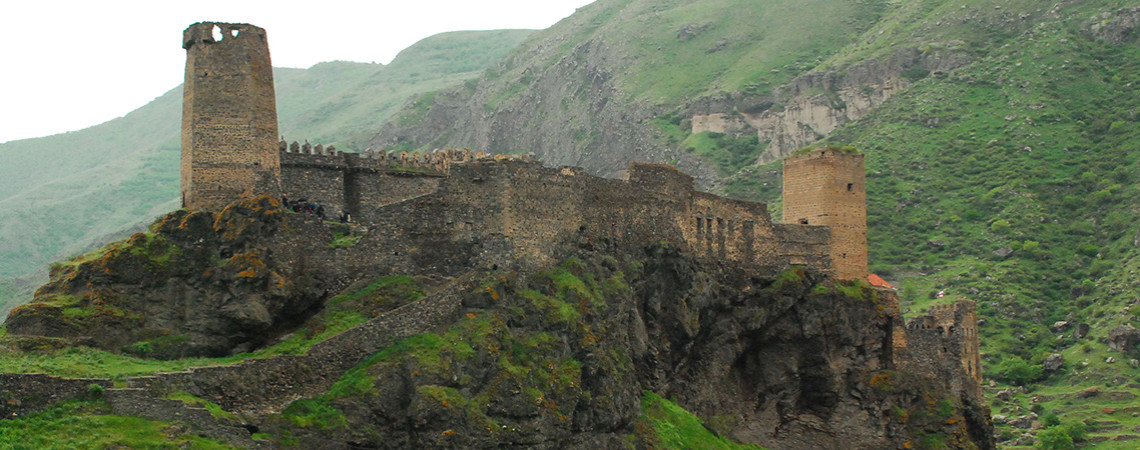At 46 km from Akhaltsikhe, situated on a cliff above the confluence of the Javakheta Mtkvari and the Artaani Mtkvari, is one of the oldest fortresses in Georgia. If you're an admirer of Т.Е. Lawrence, you'll certainly feel a powerful connection with him here. The pleasure that he must have felt upon visiting in Palestine and Syria the long-neglected fortresses that were the subject of his undergraduate thesis on Crusader castles cannot have been too different from the feelings that Khertvisi evokes.
The exact date of the foundation is unknown, but the fortress was certainly stand-ing in the tenth century. Rebuilt several times, it originally consisted of an inner fortress at the very top of the cliff. The defensive capability of its thick high walls was increased by four towers. At a later date the area of the fortress was increased. Two secret passages from the eastern wall lead toward the Javakheta Mtkvari. One was for water, the other for communication with the outside. The two main towers in the east and west within the walls date from the time of Queen Tamara (1184-1212). Inside the walls are the ruins of a church, as well as living and storage buildings. An inscription in the church dates it back to 985. Another inscription above the fortress entrance dates the Khertvisi tower and a portion of the walls to 1354-1356.
The history of the Khertvisi Fortress and town is also connected with the history of Samstkhe-Saatahago. The fortress was seized by the Turks in 1578. Briefly recaptured by Georgia's Giorgi Saakadze, it was again lost to the Turks and from 1638 became one of the most important cities of the Ottoman Empire's pashalik, an administrative unit of the territory. By the time Samtskhe was returned to Georgia after the Russo-Turkish War, the fortress had lost its military significance. It now lies in ruins, although scaffolding attests to ongoing restoration work.



